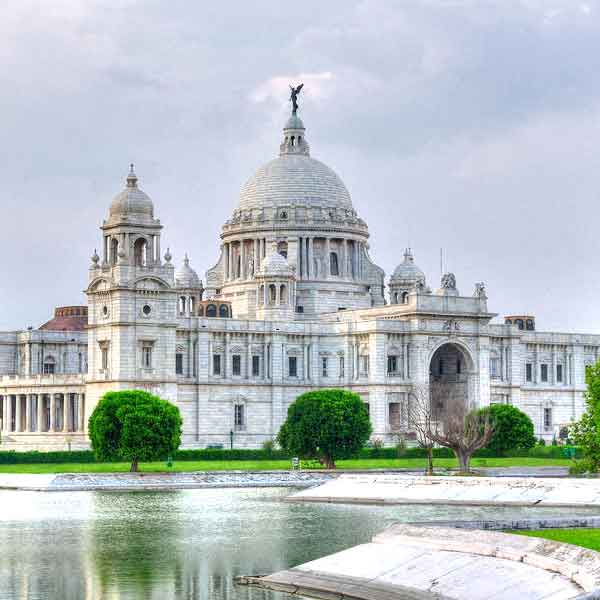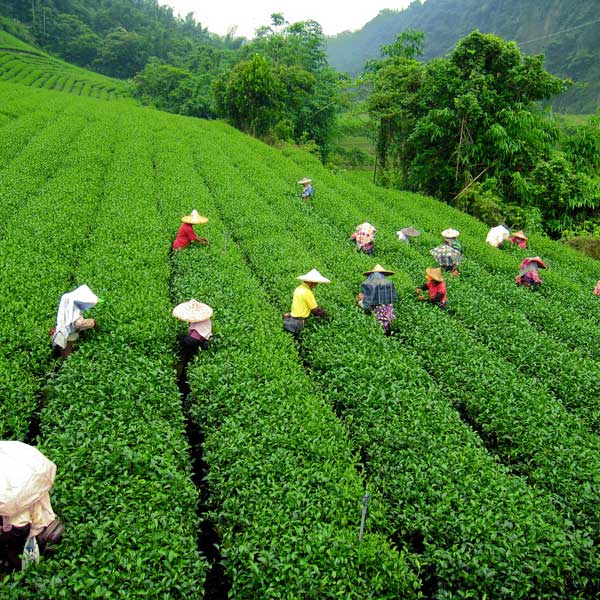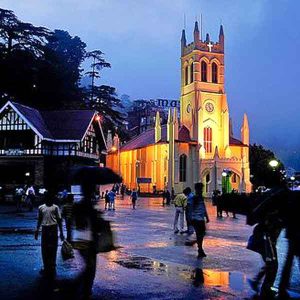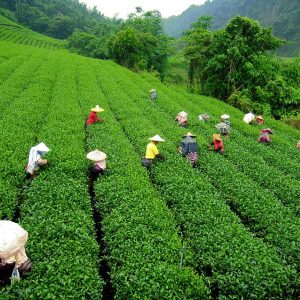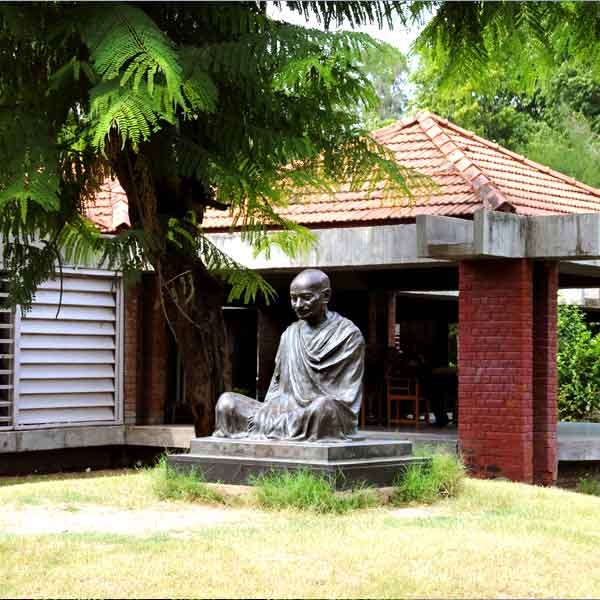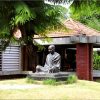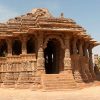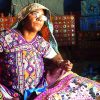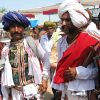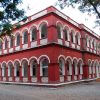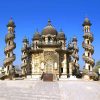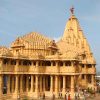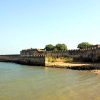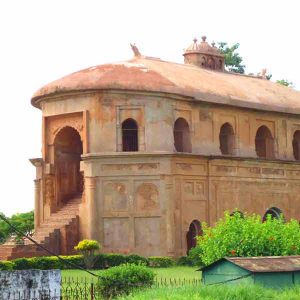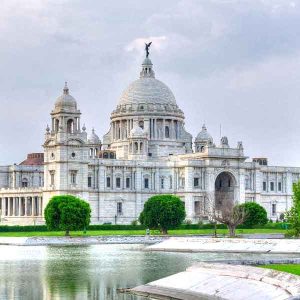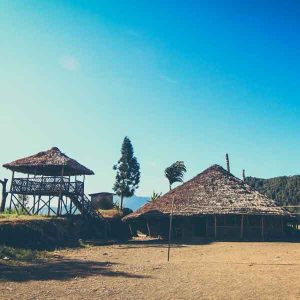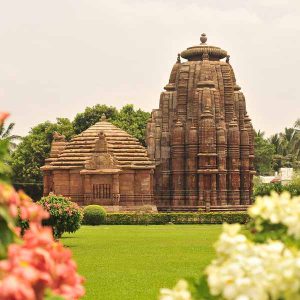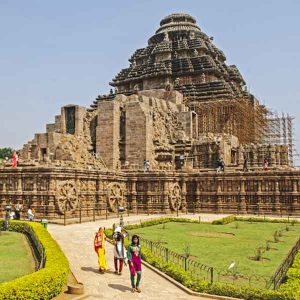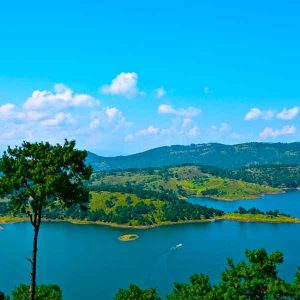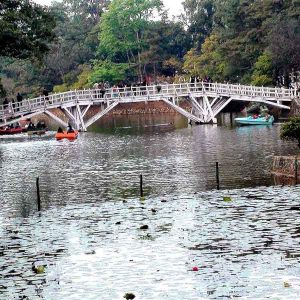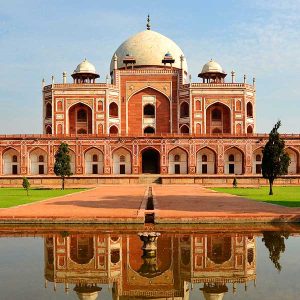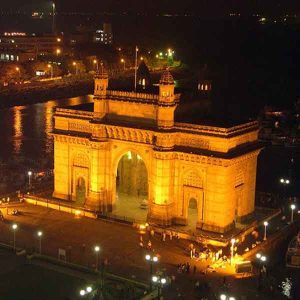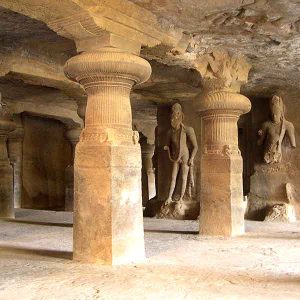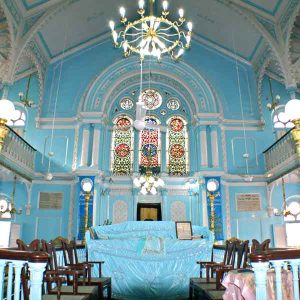Day 01: Arrive in Ahmedabad.
On arrival in Ahmedabad transfer to hotel. Afternoon see Manubhai’s rare and magnificent collection of embroideries from all over Gujarat. Rest of the day at leisure. Overnight in Ahmedabad.
Day 02: Ahmedabad.
Morning visit to the Calico Museum of Textiles, (pending availability; it is private museum and restricted to very limited number of entrances per day and they do not allow advanced booking). The museum exhibits spectacular antique and modern textiles including rare tapestries, wall hangings and costumes from all the regions of Gujarat as well as the rest of India. See a variety of textiles ranging from incredibly long, colorful embroidered wall hangings to Zari saris embroidered in gold and weighing 9kg. Also on display are old weaving machines.
Afterwards, visit the Sabarmati Ashram situated on the western bank of the Sabarmati River. This ashram, founded in 1918 by Mahatma Gandhi, who revitalized the textile industry here, became the headquarters during the struggle for Indian Independence and it is befitting that it is now primarily a spinning wheel factory.
Traditional Gujarati vegetarian dinner with local dance and music at Vishala, an authentically created Gujrati crafts village complete with traditionally decorated mud huts where potters and weavers are at work. Here we visit the Vechaar Utensils Museum with its collection of 2500 Gujarati utensils. Overnight in Ahmedabad.
Day 03: Ahmedabad. Excursion to Sayla and Wadhwan.
Day excursion to to Sayla (150 km / 3 hr), via Limbdi where mirrors are made for Gujarat’s famous mirrorwork embroidery, and visit the Bharwad and Kathi villages where beadwork traditions thrive, the silk weavers who use the Ikat technique, and the town of Wadhwan where women work on Bandhani or tie-and-dye. Wadhwan’s walled town has historic buildings and a living heritage of metalwork crafts. We will carry a picnic lunch and return to Ahmedabad for overnight. Dinner on your own.
Day 04: Ahmedabad to Zainabad via Patan.
Morning drive to Patan to visit some of its 100 Jain Temples including the Sun Temple in Modhera and Rani Kava Steps. We then visit a family of master weavers of the colorful Patola silk including the ancient art of double Ikat. Continue to Zainbad. Overnight at a unique rustic resort with modern comforts.
Day 05: Zainabad.
Morning safari to view wildlife including the wild ass. Return to resort for lunch and free time.
Late afternoon/early evening excursion to the ‘Rann of Kutch’ to visit Kutchhi Tribes. Among others, we visit Banni settlements to see the traditional handicrafts of these Abyssinian settlers, who migrated to India from Abyssinia around the 10th Century. Their work is the famous glass embroidery. Overnight in Zainabad.
Day 06: Zainabad to Bhuj via Bhujodi.
Enroute we visit Dhamaeka, the block printing village and Bhujodi Village to meet the nomadic Rabari who weave camel wool on pit looms into blankets and shawls. Overnight in Bhuj.
Days 07 & 08: Bhuj.
Bhuj, the major town of Kutch, is an old walled city. There are walls within walls, attractive gateways, old palaces with intricate carvings, and striking brightly colored Hindu temples.
Morning visit various fascinating tribal villages surrounding Bhuj. Each tribe can be identified by its traditional attire and specializes in a different form of handicraft. The Banni tribal dwellings are made of round mud huts called ‘Bhungas’‚ with a single central support pole and a thatched or tiled roof, all surrounding a large community courtyard. You will also see a variety of handicrafts, including textiles, vegetable colour dye printing, Rogan art (wax printing), glass beadwork, woolen shawls, leather articles and more.
We then visit some local weaving families in Sumarsar village, famous for Scoof Embroidery, Nirona Village with its fabulous Rogan art (wax printing) & bell making and Ludiya (aka Gandhi Gram) village. Traditional Thali dinner at Hotel Prince on one of the nights. Overnight in Bhuj.
Day 09: Bhuj to Gondal (275 kms / 5.5 hrs).
Gondal, the capital of the former princely State of Gondal, was ruled by the Jadeja Rajput clan until the independence of India. It is a fortified town located on the river Gondal. Present day Gondal is a testimony to the great visionary ruler Sir Bhagwatsinhiji, who introduced social reforms, planned the development of Gondal town and created a model state of Saurashtra in late 19th and early 20th centuries. The Gondal royal family has an exquisite & rare collection of vintage cars. Overnight in Gondal.
Day 10: Gondal.
Visit to Ayurvedic Pharmacy, 17th century Naulakha Palace, Udyog Bharti – spinning & weaving of Khadi (cotton fabric & famously associated with Mahatma Gandhi), Swaminarayan Temple. Overnight in Gondal.
Day 11: Gondal to Sassan Gir via Junagadh and Somnath (200 kms/04.5 hrs).
Junagadh, was the capital of Junagadh state under the muslim rulers of Babi Nawabs. The Junagadh town is located at the foothills of the sacred hill of Girnar and occupies a special place in the history of Gujarat. The history of Junagadh is checkered by the rules of the Mauryans, Kshatrapas, Guptas, Vallabhis, Chudasamas, Gujarat Sultans and Babi Nawabs. Junagadh, at different times in history, was under the influence of four major religions: Hinduism, Buddhism, Jain and Islam. Both political powers and religious influences enriched the culture and created fantastic edifices leaving their mark on the architecture of Junagadh. The Ashoka edicts (from 250 BC) near the town, testify to its great antiquity. Visit Uparkot Fort, built 319 BC, famous for its virtual inaccessibility- the walls are 60 feet high in places.
Somnath is one of the 12 jyotirlingas of lord Shiva. In the Shiva Purana and Nandi Upapurana, Shiva said, `I am omnipresent but specially in 12 forms and places, the jyotirlingas`. Somnath is one of these 12 holy places. Today, Somnath offers a holy pilgrimage, places of historic, religious or scenic importance. On arrival in Gir check in to a Safari Camp.
Day 12: Gir National Park.
Morning and afternoon jeep safari in the Gir National Park.
SASAN GIR NATIONAL PARK: The Gir lion sanctuary project was initiated in 1972 with one of its main objectives being to remove the local indigenous people (Maldharis) from the interior of the park. The reason for the displacement of this devoutly religious pastoral community was their ongoing conflict with the Gir Lions. Prior to and after Independence, conditions in Gir deteriorated rapidly to the detriment both of the Maldharis and the Lions. Gir Lion sanctuary is one of India’s success stories. From a pitifully small number of around twenty lions at the turn of the century there are now approximately three hundred lions in the park. If you compare this number to the populations of 30 to 40 tigers in most Project Tiger parks you can see that your chance of a lion sighting (with a reasonable length of stay) is good. Gir is also home to one of the largest leopard populations in any park in India, and especially in the hotter season they can sometimes be seen at night close to the lodges. Other wildlife to look out for are the Four-Horned Antelope (which is the only four-horned ungulate in the world), Wild Boar, Wolf, Hyena, Jackal, Jungle Cat, Chinkara, Blue Bull, Marsh Muggers as well as a wonderful variety of bird species. Overnight in Gir.
Day 13: Gir to Diu.
Morning safari. After breakfast drive 3 hrs to Diu, a secluded island offering a sensuous blend of sun, sand and deep blue sea. Off the west coast of India, it is connected to the mainland of Gujarat by a causeway. It is one of the country’s finest beaches and perhaps one of the most exotic destinations on India’s west coast. A former Portuguese enclave, Diu is dotted by three Portuguese churches, one of which has been converted into a museum housing some rare Portuguese artifacts. On arrival, check in to a resort. Rest of day free to relax!
Day 14: Diu to Bhavnagar.
This day, leave for Bhavnagar (approx 2 hrs drive)and check into your pre-booked hotel on arrival. Visit the Takhteshwar Temple, built on a small hillock overlooking the city by the local royal family, dedicated to Lord Shiva. It not only offers a great view of the city and the adjacent Gulf of Cambay, but is also an important pilgrim center. Later visit the Water Lock Gate of Bhavnagar – the first of its kind in Gujarat. The water locks maintain the water level of the docks, thus helping ships to stay afloat at the time of low tide. Overnight in Bhavnagar.
Day 15: Bhavnagar to Ahmedabad (170 km/6 to 7 hrs). Depart Ahmedabad.
Early morning check out of the hotel and drive back to Ahmedabad. On arrival transfer to the airport for your journey back home.
Date and price to suit individual arrangements based on 2 people sharing. Breakfast included. Private air-conditioned car and driver with English speaking guides for sightseeing.

